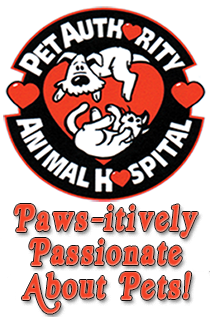Educational Articles
-
Leuprolide is given by injection and is used off label in ferrets and birds to treat reproductive and adrenal problems. Give as directed. Side effects in ferrets may include pain at the injection site, breathing difficulties, and sleepiness. Do not use in pets that are allergic to it or other gonadotropin-releasing hormones, and do not use in pregnant or nursing pets. If a negative reaction occurs, please call the veterinary office.
-
Levetiracetam is given by mouth or injection and is used off label to treat seizures and epilepsy. Give as directed by your veterinarian. Common side effects include sleepiness and incoordination in dogs and decreased appetite, incoordination, drooling, and sleepiness in cats. Do not use levetiracetam in pets that are allergic to it. If a negative reaction occurs, please call your veterinary office.
-
Levothyroxine is thyroid hormone replacement given by mouth in the form of a tablet or capsule. It is used to treat hypothyroidism and its use in cats and certain exotic animals is off label. This medication should not be used in pets with certain heart conditions, untreated Addison's disease, or hyperthyroidism.
-
Lick granuloma in dogs, also known as acral lick dermatitis, is a condition manifested as chronic licking of an area of skin, usually on the forelimbs. This condition is thought to be both physical and psychological in nature. While the condition can be frustrating to get under control, most cases of lick granulomas can be successfully treated if the owner is willing to pursue extended tests and treatments.
-
Lidocaine/lidocaine combinations topical are local anesthetics that provide anesthesia (a numbing effect) to the skin in cats, dogs, and other animals. Combination products may contain other local anesthetics, antibiotics or antimicrobials, steroids, antihistamines, and/or cleansing agents.
-
Crate training is most used with dogs, but it can be useful for kittens and cats too. Crate training is useful in many situations, such as providing a safe place when home alone or unsupervised. Cats that are calm in their crates experience less distress when they need to travel, visit the veterinary hospital, or stay at a boarding facility. Starting while your cat is young makes training easier, but even adult cats can be trained to relax in a crate. If your cat shows signs of distress (e.g., prolonged vocalization, trying to escape, salivation, rapid continuous movement) while using the training methods provided in this handout, consult your veterinarian.
-
Crate training is useful in many situations, such as providing a safe place when home alone or unsupervised. Dogs that are calm in their crates experience less distress when they need to travel, visit the veterinary hospital, or stay at a boarding facility. Starting while your dog is young makes training easier, but even adult dogs can be trained to relax in a crate. If your dog shows signs of distress (e.g., prolonged vocalization, eliminating inside the crate, trying to escape, salivation) while using the training methods provided in this handout, consult your veterinarian.
-
A wild reptile typically spends many hours a day basking in the sun and absorbing ultraviolet (UV) light, which is necessary for the manufacture of vitamin D3. Vitamin D3 is manufactured in the skin and is required for the intestines to properly absorb calcium from food. Lack of UV light can predispose a pet reptile to nutritional metabolic bone disease (MBD). Regular exposure to natural direct sunlight outside is encouraged and recommended whenever possible.
-
Lincomycin is given by mouth or injection and is used on and off label to treat certain bacterial infections. Give as directed by your veterinarian. Common side effects include vomiting, diarrhea, or drooling. Do not use in pets that are allergic to it or similar drugs, in pets with a candida fungal infection, very young pets, or in rabbits, hamsters, guinea pigs, or horses. If a negative reaction occurs, please call the veterinary office.
-
One particularly dangerous type of foreign body in cats is a linear foreign body: a long, thin object such as string, yarn, or tinsel. If one end of the linear foreign body becomes lodged in the gastrointestinal tract, intestinal perforation may occur due to bunching up of the intestines. The most common signs of a linear foreign body include vomiting, anorexia (refusal to eat), dehydration, and lethargy. If your veterinarian suspects a linear foreign body, your cat will need an exploratory laparotomy (abdominal surgery).

